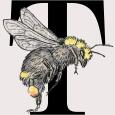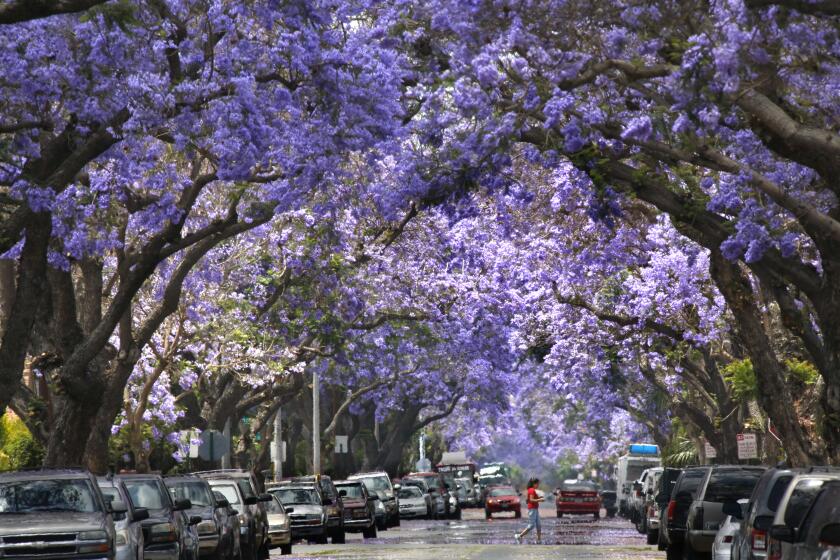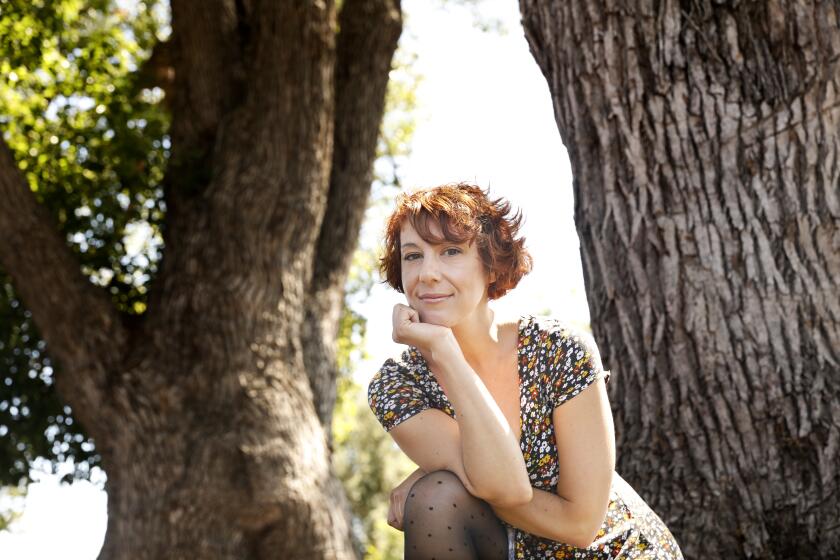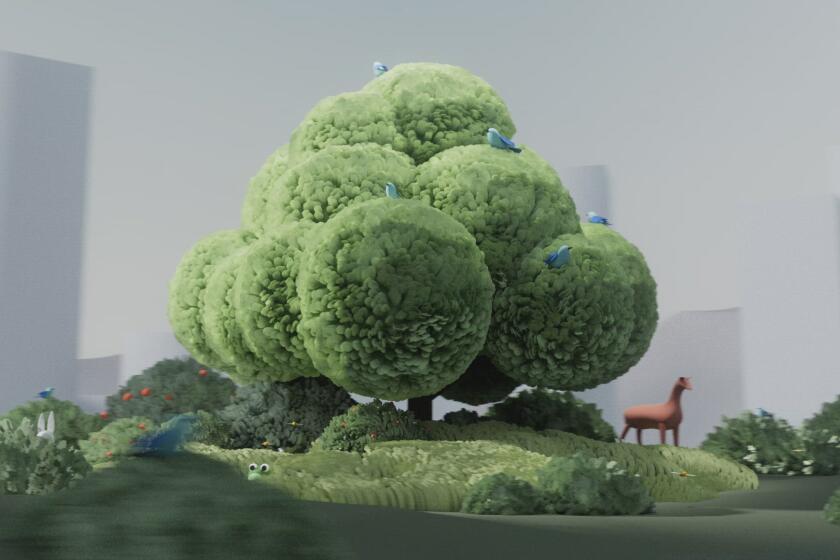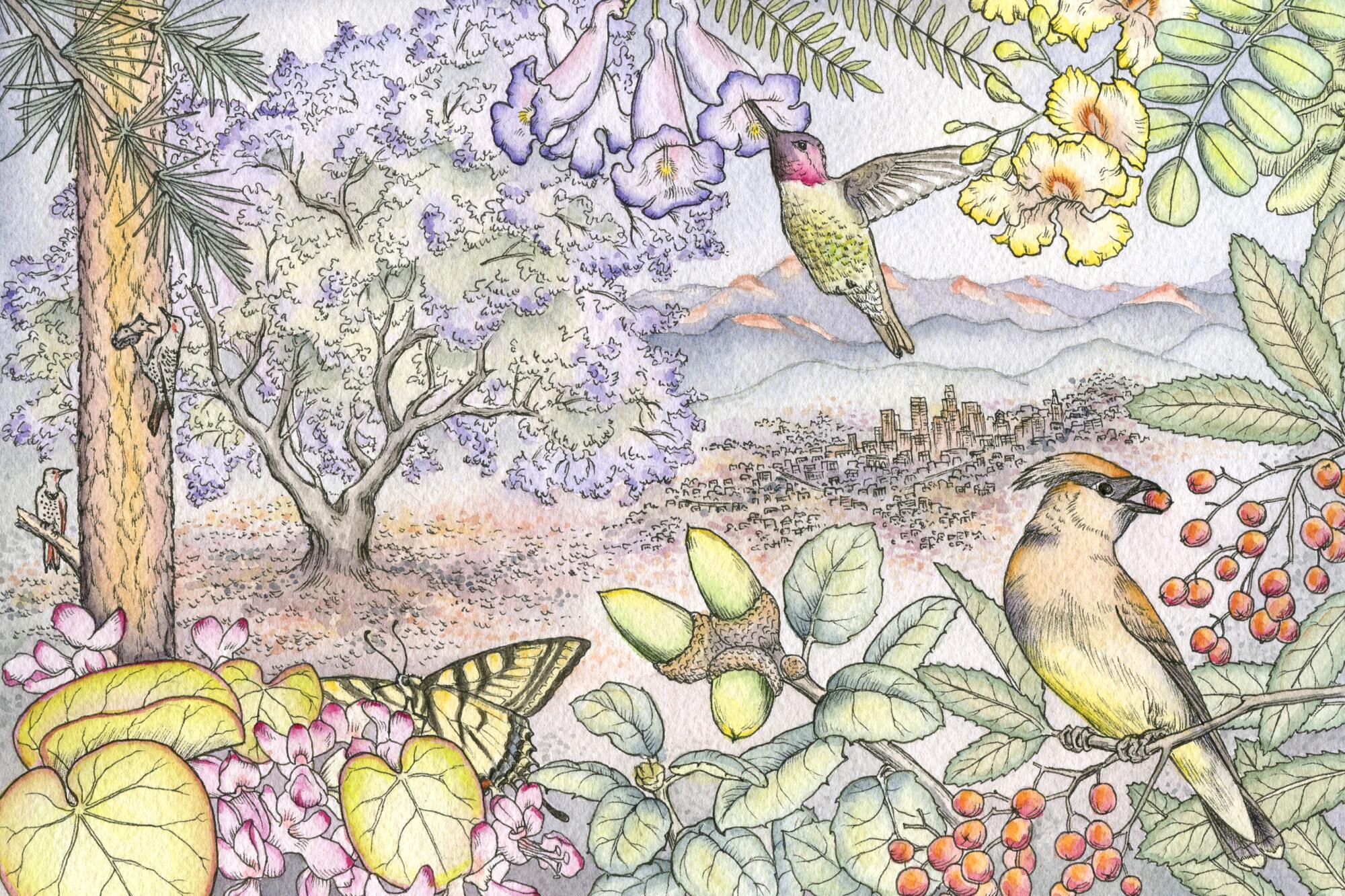
- Share via
The blooming of jacarandas often signals the start of pre-summer, the most hopeful time of year. Vacation mode nears when their blue-ish purple flowers holler “party!”
B. Ramón Alvarado, sustainability specialist at Community Corporation of Santa Monica, is a jacarandista like me. I met him in the course of asking people a two-part question I recommend you ask too: What are your favorite L.A. trees, and what do you love about them?
Alvarado will forever remember a moment shortly after his family uprooted from Southern California to Mexico. From the back of his biological father’s pickup truck, he saw the jacarandas he knew and loved from Chino blossoming flamboyantly in the central plaza of Guadalajara.
“It was a visceral, magnificent moment that made me feel connected,” he recollects with the calm intensity of someone deeply in love with a tree.
Although jacaranda flowers are beautiful to humans, says Evan Meyer, executive director of the Theodore Payne Foundation for Wild Flowers and Native Plants, they are not native plants and therefore “not beautiful to the wildlife of Los Angeles.”
Meyer recommends redefining tree love by “reorienting our definition of beauty away from human aesthetics” and instead considering, “How does this tree contribute to the ecosystem of Southern California?”
While that doesn’t make me stop loving jacarandas, it does challenge me to expand my knowledge of local trees as well as my repertoire of ways to appreciate them. Before L.A. goes gaga for jacarandas this year, I reached out to urban forest professionals from City Hall to the heart of the Angeles National Forest to help me use jacaranda passion as a seed to better cultivate my love of all L.A. trees. The result of those conversations is this survey of a representative few of the many phenomenal trees, both native and transplanted, that flourish in Los Angeles — all of them our living, breathing neighbors, worthy of being loved or at least being seen and cared for.
The jacaranda trees look sparse in parts of Los Angeles County. While some trees have whiffs of flowers, gloomy weather has slowed down the purple party.
Coast live oak
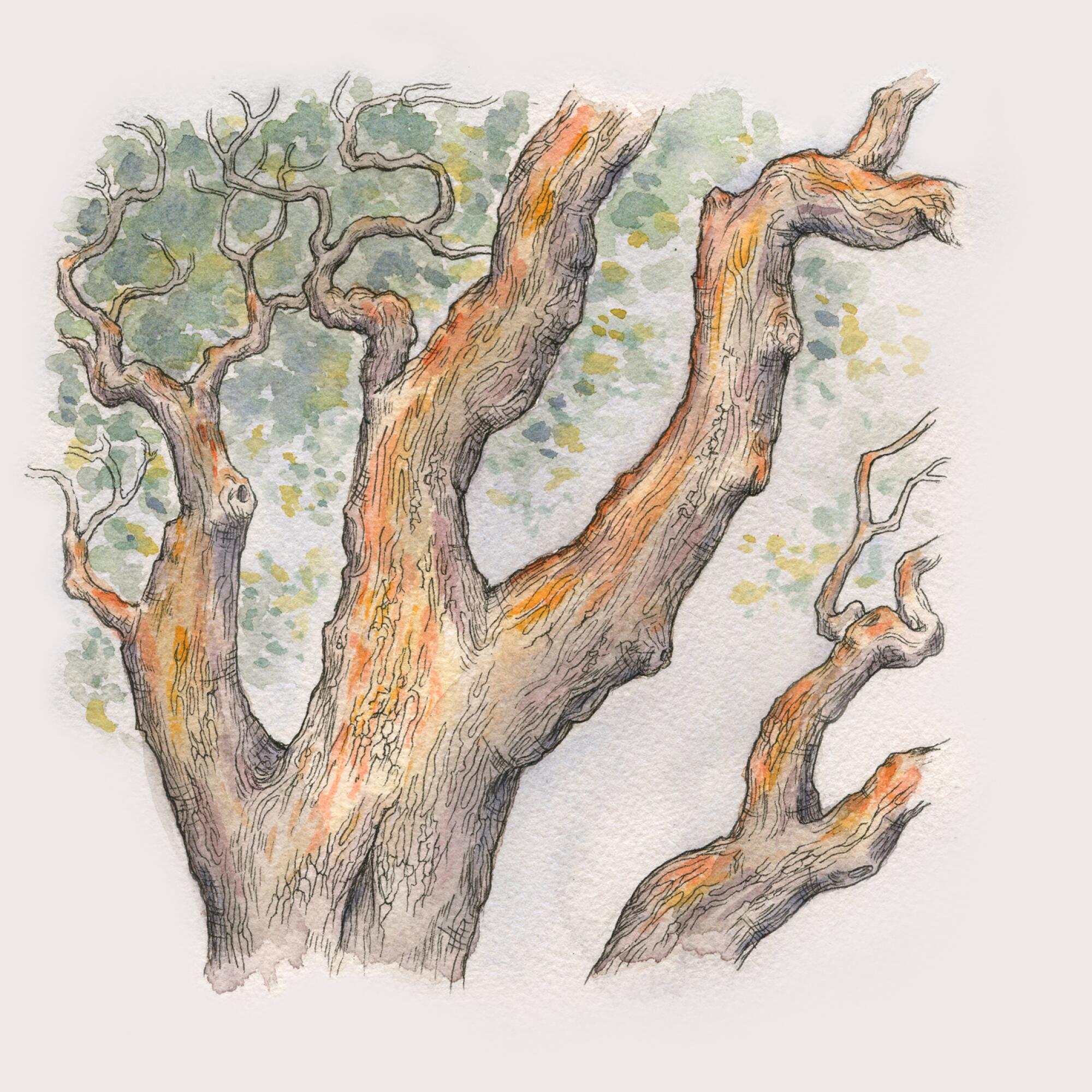
Coast live oak comes up as No. 1 for most of the people I interviewed, including Andy Lipkis, founder of L.A.’s foremost volunteer tree-planting organization, TreePeople. Lipkis says coast live oak provides habitat, shade, cleaner air and effective water management come drought or deluge. He recommends sitting with your back against the trusty trunk, a great way to experience tree love. Doing just that recently, I gazed up into the canopy of limbs and felt a sense of sturdiness. Then I looked at the ground, and guess what I saw?
Acorns!!!
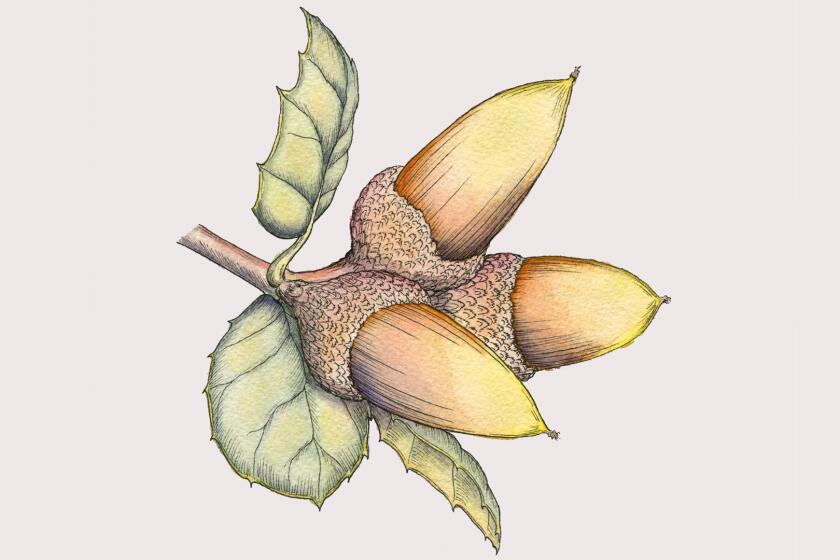
Consider my inner second-grader’s sense of wonder in nature restored.
Coast live oaks thrive throughout L.A. County, from Sullivan Canyon in Santa Monica to San Gabriel River Canyon in Azusa, with a majestic ancient beauty thriving at the Huntington Library, Art Museum and Botanical Gardens. To find coast live oaks near you, use the Bureau of Street Services tree inventory program, TreeKeeper, which will introduce you by name to any tree on any street or in any park in Los Angeles.
There are many other types of oaks to love, and telling them apart can be a tough nut to crack. You might be tempted to use a plant identification app. My advice is to give in to that temptation, up to a point. Try PictureThis. It’s easy to use and reasonably accurate.
But beware of merely ID’ing a tree, snapping a pic and moving on. This would cause you to miss out on a deeper connection. As Stephanie Carrie, curator of the wonder-filled Instagram Trees of LA, told me, “Don’t let not knowing the name of a tree distract you from experiencing the color of its leaves or the texture of its bark.”
Cork oak
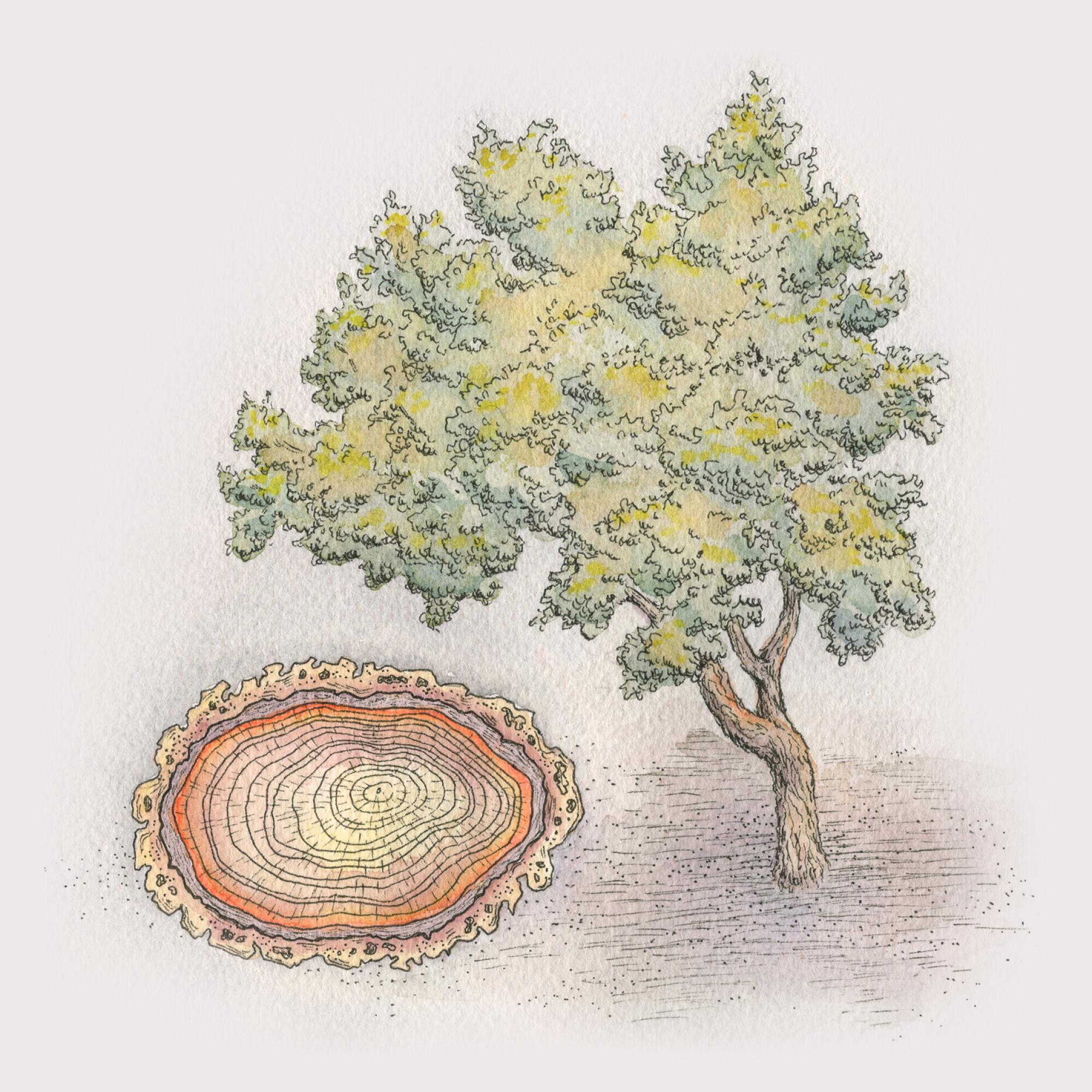
Not every tree on this list is going to be an oak, I promise. However, I must share what fourth-generation woodworker Lou Sarg told me about cork oak, the bark of which is what cork — as in wine and whiskey bottle corks — is made of.
Sarg, whose mastery in carving wooden bow ties and jewelry can be viewed on Instagram or in person at Salon Benders in Long Beach, told me the swirling patterns of cork oak bark on the tree remind her of Vincent van Gogh’s “Starry Night.” Observing bark and thinking about what it reminds you of is a great way to love a tree.
She also told me the uniquely soft-to-the-touch resilience of cork bark evolved to protect the tree from fire. “I would like to be more like a cork oak,” Sarg says, “protecting myself while still remaining soft on the outside.”
This is yet another form of tree love: imagining how you might take on the desirable qualities of a tree you admire. Sarg recommends encountering cork oak in Chavez Ravine and Larchmont Village.
Deodar cedar
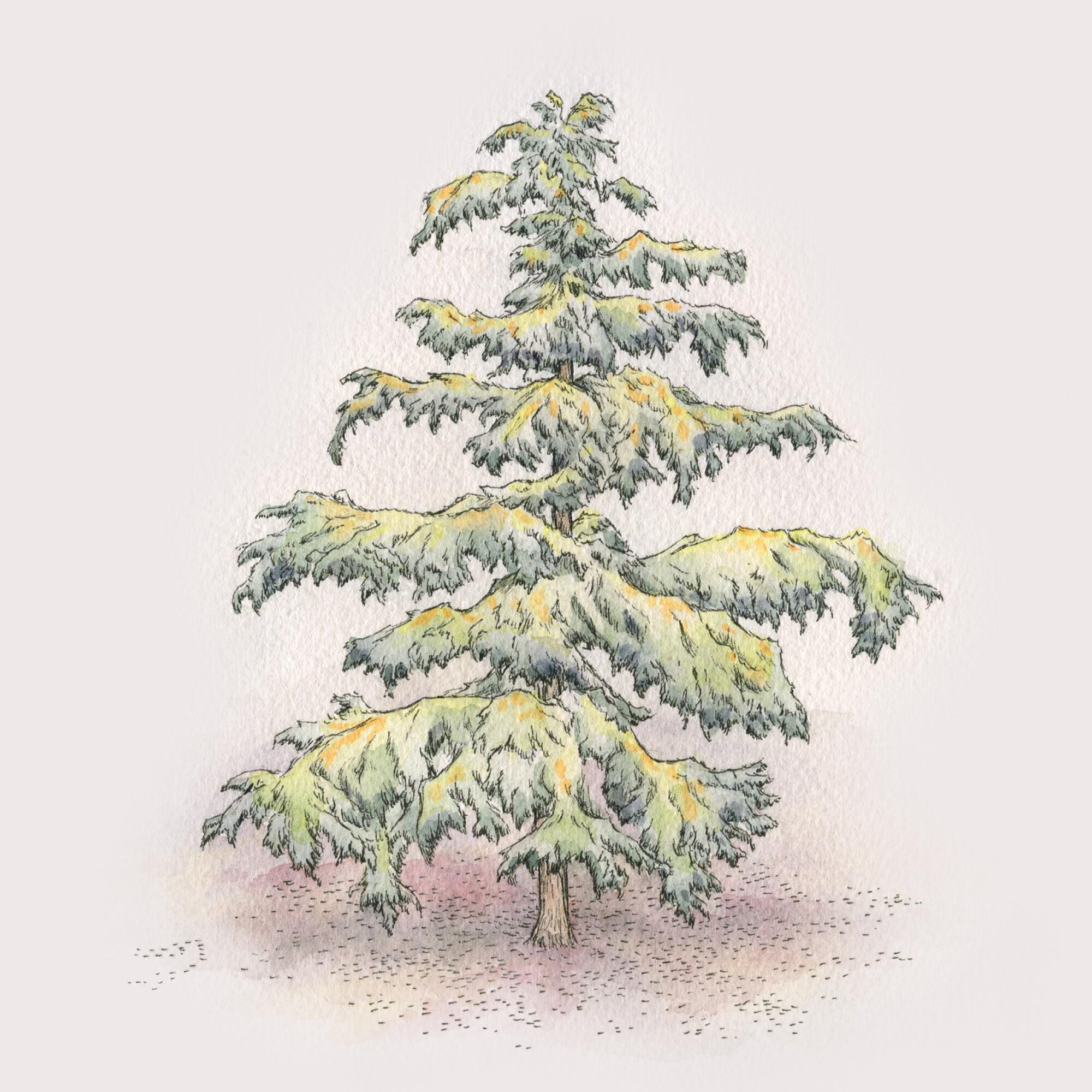
Nick Araya is a huge deodar cedar fan due to the trees being 50 feet tall, 100 years old and still standing. “People who come to L.A. like to scalp everything,” observes the board-certified master arborist and owner of TreeCareLA. He sees the prevalence of deodar cedars in L.A. as a sign of “collective unspoken respect” — as befits a tree whose name in Sanskrit means “timber of the gods.”
Los Feliz Boulevard is lined with deodars, he told me. Araya, who was born in Japan, also introduced me to the practice of tree-bathing, which is like sun-bathing, except with trees. The Japanese phrase for tree bathing is “shinrin-yoku,” in which “shinrin” means “forest” and “yoku” means “bath,” he says. I walk around these days repeating the phrase “shinrin-yoku” like a mantra or a prayer.
Photos on the Trees of L.A. Instagram account highlight the often-overlooked city trees that deserve attention from Angelenos.
His admiration made me want to witness a deodar for myself, so I hopped on my bike and began a series of wrong identifications. (This was before I started using PictureThis.) I serially misidentified a row of New Zealand Christmas trees, a sweetgum and a camphor tree, none of which look like a deodar cedar, which is immensely tall, with gracefully spaced, almost perpendicular branches.
I confess my haplessness because getting new trees wrong is part of learning to love them. Now I see actual deodars almost everywhere I go. They make me feel like I am looking up into a spaceship that brings goodwill.
I also often think of what Araya says about arborists really loving to climb deodars: “They’re like a giant jungle gym.”
Tipu
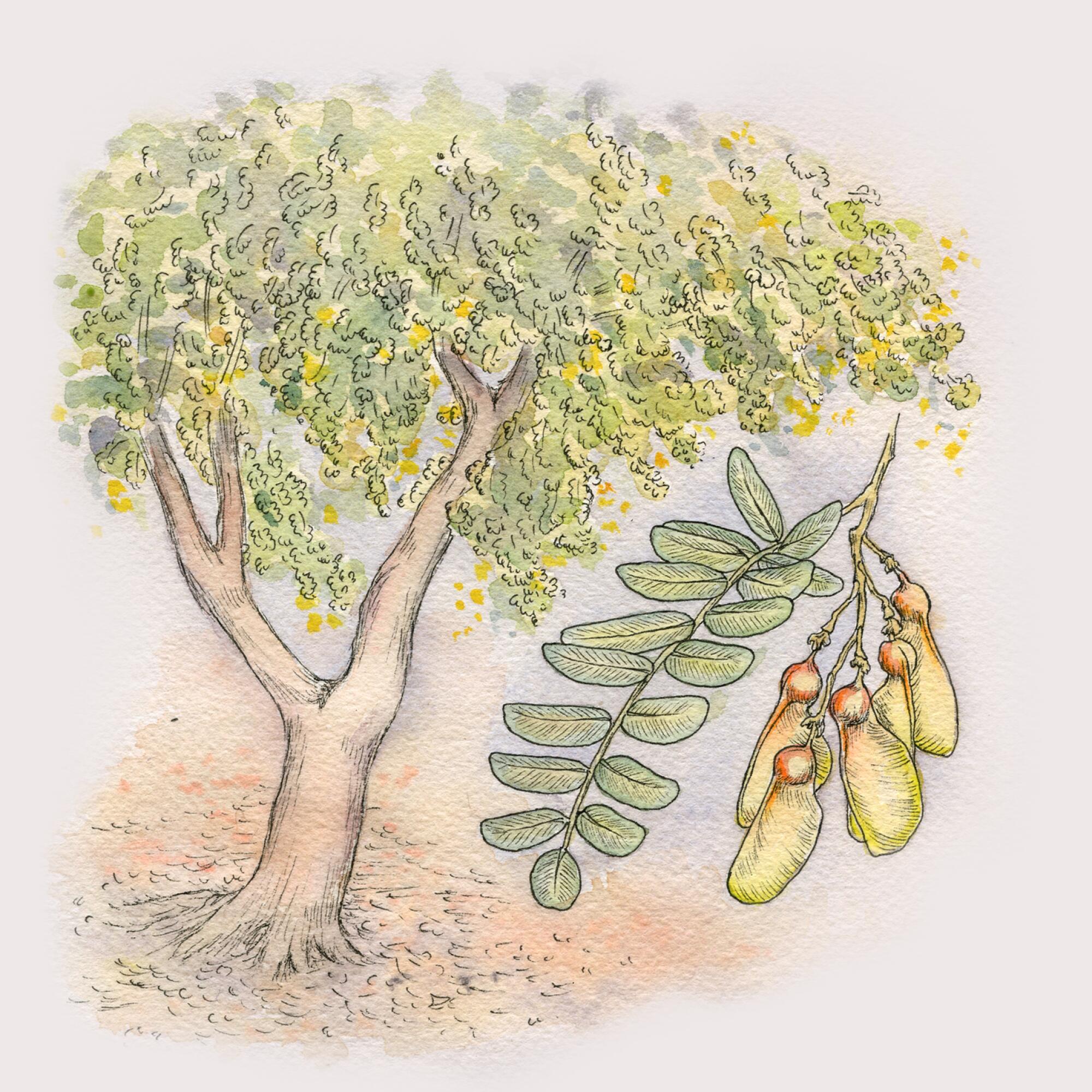
A tipu tree in the South Coast Botanic Garden is the tree that most recently spoke to me, its arms stretched out low to the ground like an all-embracing hug, beckoning me to return the embrace.
Tipus can help support our entire city. Araya says they “check a lot of the boxes for what Los Angeles needs” in terms of being fast-growing, shade-giving and strong.
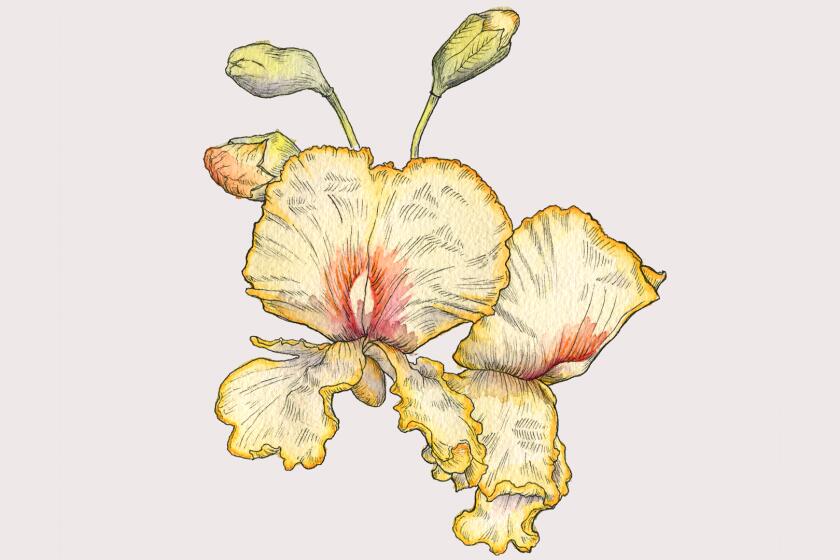
Climbing a tipu tree is against the rules at SCBG; instead, you can sit nearby and read about them in Matt Ritter’s essential guidebook, “A Californian’s Guide to the Trees Among Us.” He writes that the tipu “is praised for its beauty, drought tolerance and durability in varying soil conditions, but it is criticized for having invasive roots and brittle wood.”
This brings to mind what L.A.’s city forest officer, Rachel Malarich, told me about the ecological role of trees: “Trees are superheroes, but even superheroes have their strengths and weaknesses.” Her favorite tipu grows in Elysian Park and in midsummer rains down a wonderment of yellow flowers.
Moreton Bay fig
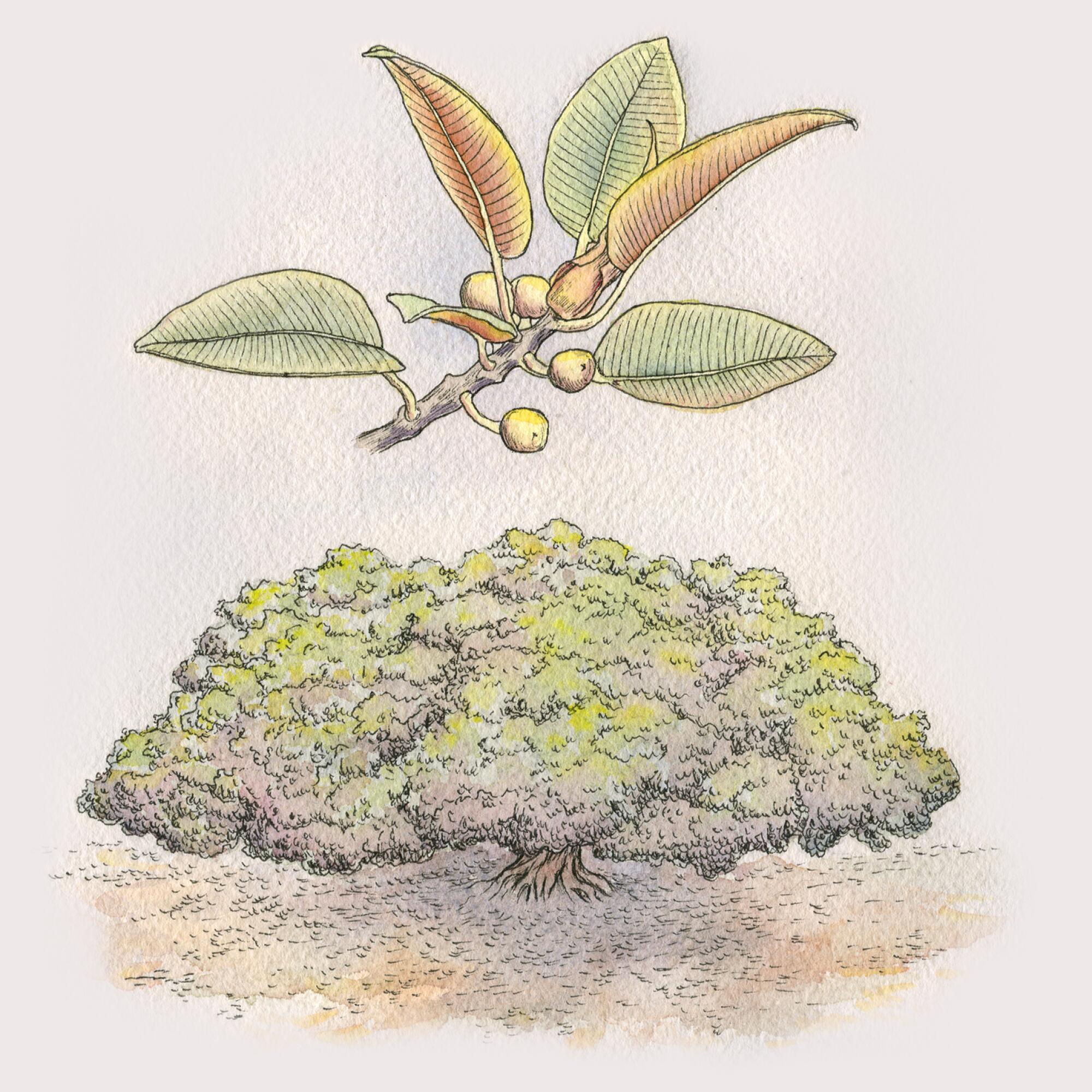
“Awesomeness” is one of the main things Malarich values in a tree, although a city forest officer seeking to maintain and expand the canopy must be mindful of constraints on urban trees such as sidewalks and utility lines.
I have personally been constrained by a condition called plant blindness, which was brought to my attention by Jann Vendetti of the Natural History Museum of Los Angeles County. It’s when you simply don’t register plants as you go about your day. For instance, I never realized there is a half-mile of 100-foot-tall Canary Island pines lining Culver Boulevard just southwest of the Sony Studios. I must have passed those trees 1,000 times or more, until the day after Vendetti told me about plant blindness.
Finally seeing those Canary Island pines made me feel like the Grinch when his heart gets bigger. I hope to give that feeling to you by sharing that right along Exposition Boulevard in front of the Natural History Museum, there is a magnificent stand of Moreton Bay figs.
They are gigantic green cumulus clouds with roots like rhinoceroses. I look for them every time I’m taking the Expo Line downtown and every time I’m headed home. You can see them from the train, just to the east of the gingko trees lining the median.
Western redbud
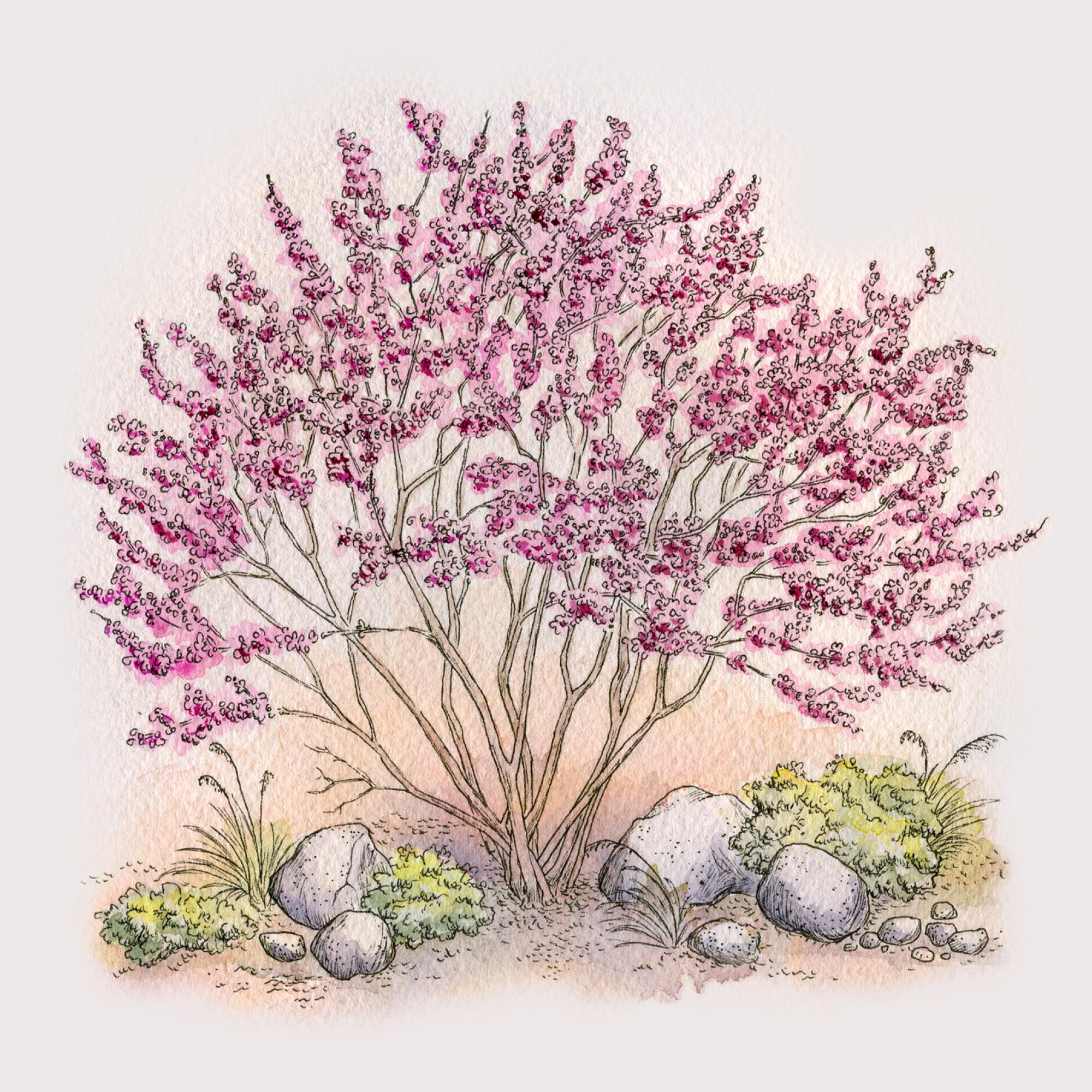
Using my newfound powers of tree awareness, I have been able to focus on ecologically copacetic trees that are not so much awesome as sublime. For example, I located a Western redbud after hearing good things from Scott Kleinrock of the Chino Basin Water Conservation District, who told me this tree does “many lovely things throughout the year,” which made it sound like one that would reciprocate my love.
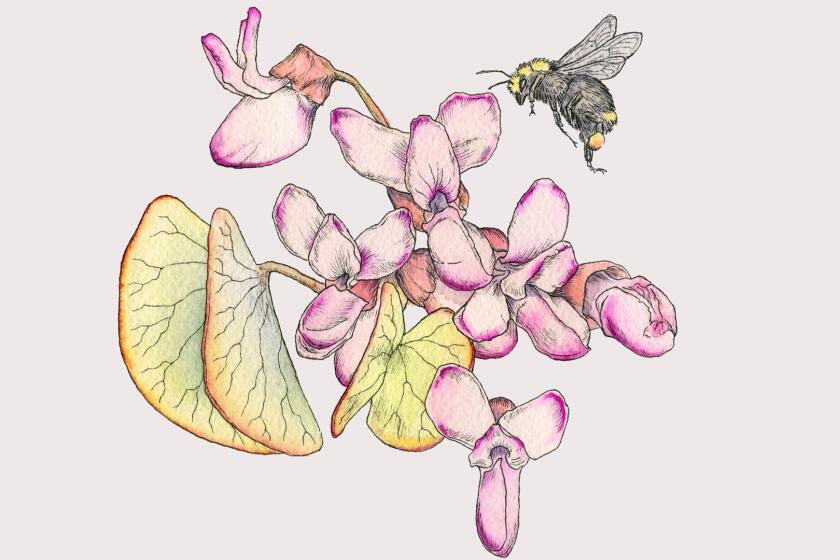
Using the Treekeeper software, I correctly located a Western redbud around the block from my house. It was a modest 10-footer with pink-purple flowers popping against bare branches. The flowers come out before the leaves, so you get a big jolt of pure prettiness. Also, you and other creatures can eat the flowers. They taste like peas. Then, Kleinrock assures me, beautiful foliage comes out while the flowers dry into seeds that are “living bird feeders.”
Finally, the leaves turn yellow in the fall. Some tree! I was so happy to identify the single Western redbud around the block from my house that later the same day I identified an entire grove on a bike ride through the North Valleyheart Riverwalk in Studio City, where I had gone to search for toyon.
Los Angeles needs micro forests to help fight climate change and animal extinctions, says horticulturist Katherine Pakradouni.
Toyon
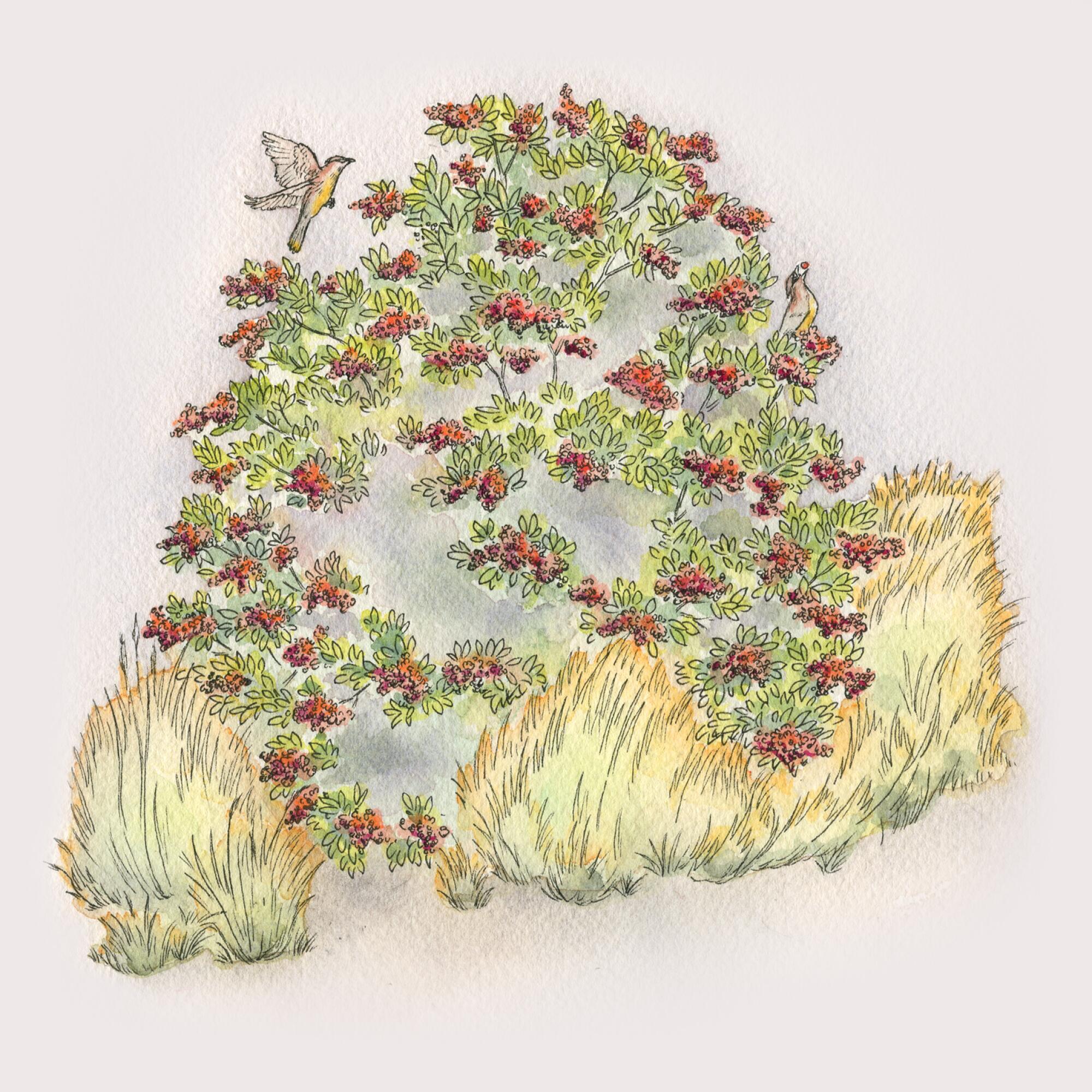
Just because you are looking for a tree to love does not mean you will find it. I have been searching for toyon ever since Evan Meyer of the Theodore Payne Foundation — the guy who told me jacarandas are not beautiful to native L.A. creatures — also turned me on to these tree-like shrubs or shrub-like trees. Toyon produces white summertime flowers that turn into red winter berries that look like holly berries (even though toyon is in the rose family). This, along with toyon’s prevalence in the hills around here, is what legend tells us led to the naming of Hollywood.
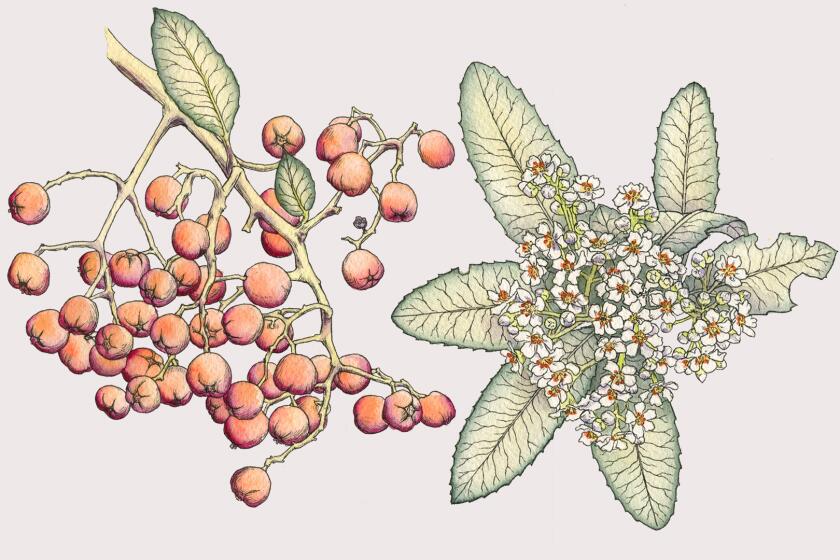
That’s part of what grabbed me about toyon. The other part was Meyer’s description of the cedar waxwing, a bird especially partial to those berries. He says cedar waxwings have a “1980s glam-rock look with eyeliner and spiked hair.” This I had to see, but I didn’t, because it was too early in the year, and also because I couldn’t find any toyon at all.
However, I did get to see the Los Angeles River in full torrent after March rains. I also identified and sketched a heretofore elusive Engelmann oak while listening to the coo-coo-coo of a mourning dove and mellifluous chirping by other more high-pitched birdies.
Ponderosa pine
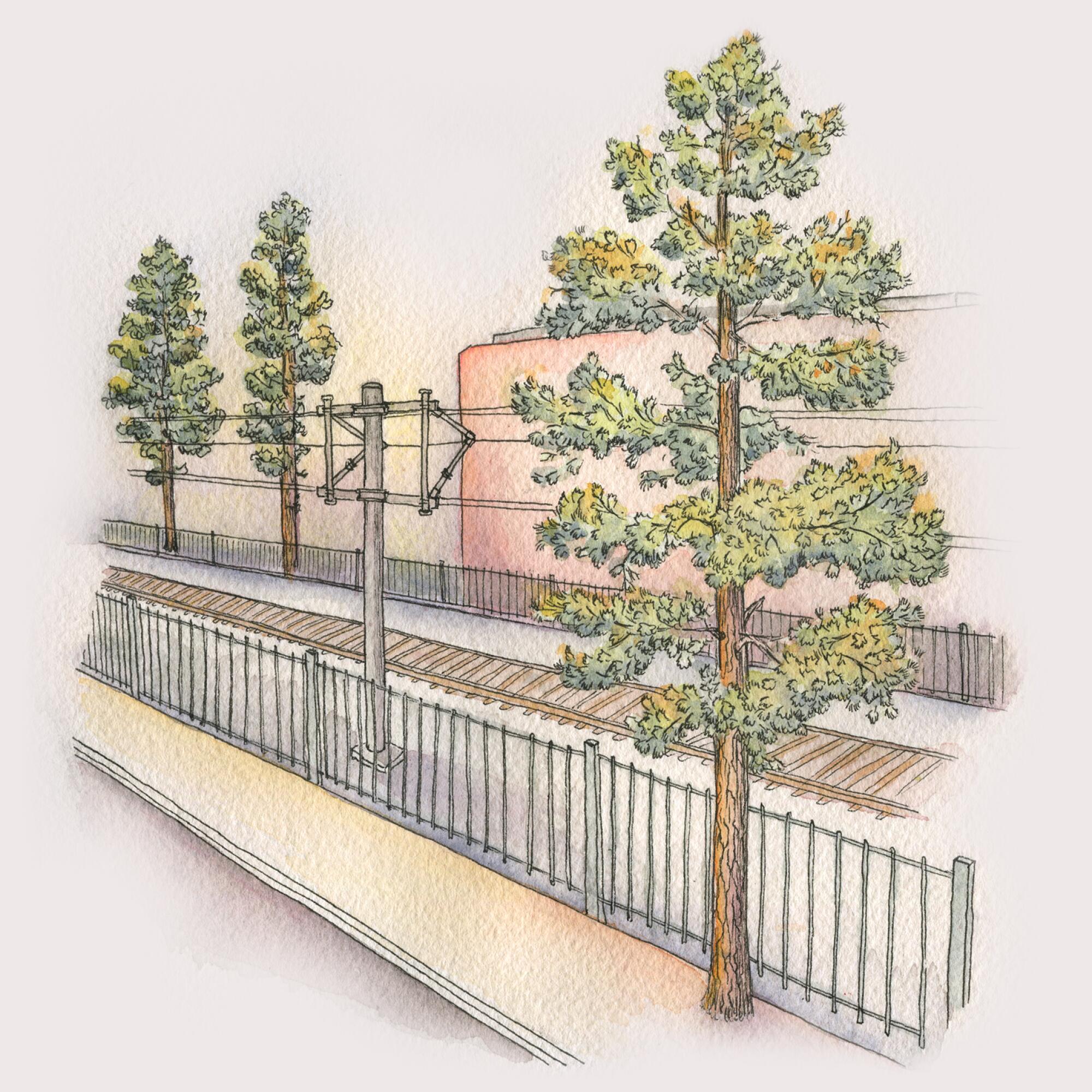
For a big finish, I was hoping to visit the descendants of a ponderosa pine in the Angeles National Forest. Gregory Stenmo, a field battalion commander for the Forest Service, had told me about the mother ponderosa tree along the west side of the Silver Moccasin Trail; the tree had a 90-inch circumference and was revered by the Gabrielino Tongva Tribe.
The 2009 Station fire stressed that mother tree so much that she died. However, ponderosa pines use fire to reproduce, so the next generation of ponderosas grows around the standing dead tree. Stenmo speaks with tenderness and pride about these trees, which are growing five times taller than the other young ponderosas nearby. Bears love to scratch their backs against the standing dead tree. You can see bear fur in the remains of the bark.
Stenmo texted me a map pin so I could see it myself but advised that the area was snowed in. I had to content myself with watching a YouTube video featuring another of Stenmo’s favorite trees, an incense cedar that he loves to eat lunch with his back against as he listens to woodpeckers. In an episode of “The Office,” Michael Scott communes with that very incense cedar, which legend puts on the outskirts of Scranton, Pa., but in fact lives right here in L.A.
My inability to visit that ponderosa pine in person reminded me that it is one thing not to be able to experience a particular tree and another not to experience any trees at all. Many residents of South L.A. can look up and down their block and not see a single tree.
I visited my friend Kathleen Blakistone, co-founder of Moonwater Farm in Compton. We basked beneath the mulberry tree in her backyard and the elderberry in front, the Japanese magnolia and evergreen ash down the block.
“It’s nice here,” she says. “But if you want to see a tree desert, ride the side streets along Central [Avenue] to Chuco’s Justice Center.” Sure enough, the horizon is so devoid of trees that you could see downtown from 20 miles away.
But once at Chuco’s, a street-smart community center, you’ll see milkweed and sunflowers thriving in a patch of jackhammered asphalt, surrounded by raised beds of dazzling blue nigella and leafy greens bursting out of hydroponic towers. This oasis in the parking lot is where Erica Montelongo of L.A. Compost and Yesenia Morales of Ruckus Roots teach local youth about gardening.
Solutions to tree inequity, says Montelongo, “definitely need to come from empowered people within our community.” In that lush patch of parking lot, the Rebel Garden grows a future where more Angelenos will have more trees to love.
More to Read
Sign up for The Wild
We’ll help you find the best places to hike, bike and run, as well as the perfect silent spots for meditation and yoga.
You may occasionally receive promotional content from the Los Angeles Times.
